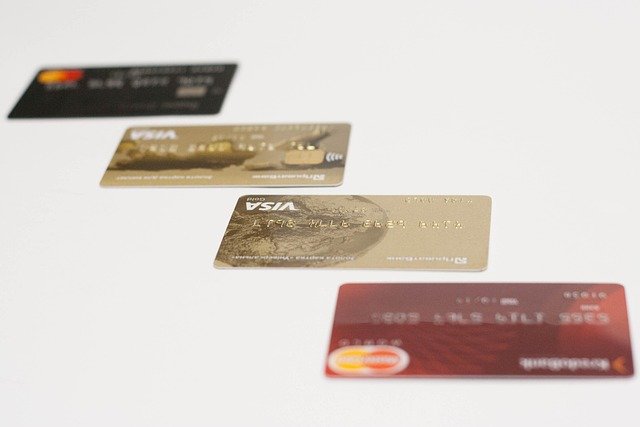Cashback Credit Cards in the US: How They Work
Cashback credit cards have become increasingly popular among American consumers seeking rewards for their everyday spending. These financial tools offer a percentage of your purchases back as a reward, essentially giving you a discount on everything you buy. Understanding how these cards function and comparing their various features can help you maximize your returns and choose the card that best fits your spending habits.

Cashback credit cards in the US offer cardholders a percentage of their purchases back as a reward. These cards have gained popularity for their straightforward value proposition: spend money and get some of it back. Unlike points-based rewards that may have complicated redemption processes, cashback rewards are typically easier to understand and use. However, not all cashback credit cards are created equal, with different reward structures, rates, and fees that can significantly impact their overall value.
What is a cashback credit card and how does it work?
Cashback credit cards operate on a simple premise: when you make eligible purchases with your card, the issuer returns a percentage of the transaction amount to you as a reward. This percentage typically ranges from 1% to 5%, depending on the card and purchase category. For example, if you have a card that offers 2% cashback and spend $100 on groceries, you’ll earn $2 back.
The rewards are typically tracked in your online account and accumulate until you decide to redeem them. Most issuers offer several redemption options, including statement credits that reduce your balance, direct deposits to your bank account, paper checks, or gift cards. Some cards even allow you to redeem your cashback for merchandise or travel through the issuer’s portal.
The cashback mechanism is essentially a rebate system funded by interchange fees—the charges merchants pay to accept credit card transactions. Card issuers share a portion of these fees with cardholders in the form of cashback rewards to incentivize card usage and customer loyalty.
Different types of cashback rewards in the US
Cashback credit cards in the United States typically fall into three main reward structures:
Flat-rate cashback cards offer the same percentage back on all purchases regardless of category. These cards, which commonly offer 1.5% to 2% back, are ideal for consumers who want simplicity and predictable rewards without tracking spending categories.
Category-based cashback cards provide higher rewards rates (often 3% to 5%) in specific spending categories like groceries, gas, dining, or travel, while offering a lower rate (typically 1%) on all other purchases. Some cards feature fixed reward categories, while others rotate categories quarterly, requiring cardholders to activate or track the current bonus categories.
Tiered cashback programs combine elements of both structures by offering different fixed rates for different spending categories. For example, a card might permanently offer 3% on dining, 2% on groceries, and 1% on everything else, allowing cardholders to maximize rewards in their highest spending areas.
Some issuers also offer bonus cashback for new cardholders, such as increased reward rates during the first few months or additional cashback after spending a certain amount within an introductory period.
Benefits of using a cashback credit card
The most obvious benefit of cashback credit cards is the direct financial return on your everyday spending. This essentially provides a discount on all purchases, helping you save money over time. Unlike points or miles that may fluctuate in value, cashback rewards have a clear, consistent value.
Many cashback cards also come with additional perks such as purchase protection, extended warranties, travel insurance, cell phone protection, or concierge services. These benefits can provide significant value beyond the cashback rewards themselves.
Cashback credit cards can also help build credit history when used responsibly. By making purchases and paying your bill on time each month, you can establish a positive credit record that may help improve your credit score over time.
Some cards offer sign-up bonuses that provide substantial cashback rewards after meeting a minimum spending requirement within the first few months. These bonuses can range from $100 to $300 or more, offering immediate value to new cardholders.
Additionally, many cashback cards don’t charge annual fees, making them accessible options for consumers who want rewards without paying for the privilege of having the card.
Important fees and conditions to consider
While cashback rewards are attractive, understanding the associated costs and conditions is crucial. Annual fees can range from zero to several hundred dollars, potentially offsetting the value of earned rewards. Cards with higher cashback rates often charge annual fees, requiring cardholders to calculate whether their spending patterns justify the cost.
Interest rates on cashback cards tend to be higher than non-reward cards, with APRs typically ranging from 15% to 25% or more. If you carry a balance, the interest charges can quickly exceed the value of earned cashback, negating any financial benefit.
Many cashback cards impose redemption thresholds, requiring you to accumulate a minimum amount (often $25) before you can access your rewards. Some issuers also set expiration dates on cashback rewards, typically after 3-5 years of inactivity.
Foreign transaction fees of 3% to 5% can apply when using your card internationally, making some cashback cards less suitable for frequent travelers. Additionally, certain transaction types like cash advances, balance transfers, or money orders typically don’t earn cashback rewards.
| Card Type | Typical Cashback Rate | Common Annual Fee Range | Notable Features |
|---|---|---|---|
| Flat-rate | 1.5% - 2% on everything | $0 - $95 | Simplicity, consistent returns |
| Category-based | 3% - 5% on select categories | $0 - $95 | Higher returns in specific spending areas |
| Rotating categories | 5% in quarterly categories | $0 | Requires category activation |
| Premium cashback | 2% - 6% on select categories | $95 - $695 | Enhanced benefits, higher reward potential |
Prices, rates, or cost estimates mentioned in this article are based on the latest available information but may change over time. Independent research is advised before making financial decisions.
Tips for choosing the right cashback credit card
When selecting a cashback credit card, analyze your spending patterns to identify where you spend the most money. Choose a card that maximizes rewards in these categories. For example, if you spend heavily on groceries and dining, look for cards offering higher cashback percentages in these categories.
Calculate the potential annual rewards based on your typical spending and subtract any annual fees to determine the net benefit. Sometimes a card with a higher annual fee but better rewards structure can provide more value than a no-fee card with lower cashback rates.
Consider your redemption preferences. Some cards offer automatic redemption, while others require manual redemption at specific thresholds. Certain issuers also provide bonus value when redeeming cashback for specific options like travel or gift cards.
Evaluate the sign-up bonus and compare it to the spending requirement. A generous bonus can provide significant upfront value, but ensure the required spending amount aligns with your normal budget to avoid unnecessary purchases.
Review additional card benefits that may add value beyond cashback, such as purchase protection, extended warranties, or travel benefits. These features can significantly enhance a card’s overall value proposition.
Finally, check your credit score before applying, as the most rewarding cashback cards typically require good to excellent credit (scores of 670 or higher). Applying for cards matching your credit profile improves approval odds and helps avoid unnecessary hard inquiries on your credit report.
Cashback credit cards can be valuable financial tools when chosen wisely and used responsibly. By understanding how they work, comparing options, and aligning your choice with your spending habits, you can maximize rewards while avoiding potential pitfalls like high interest charges or annual fees that exceed the benefits.




